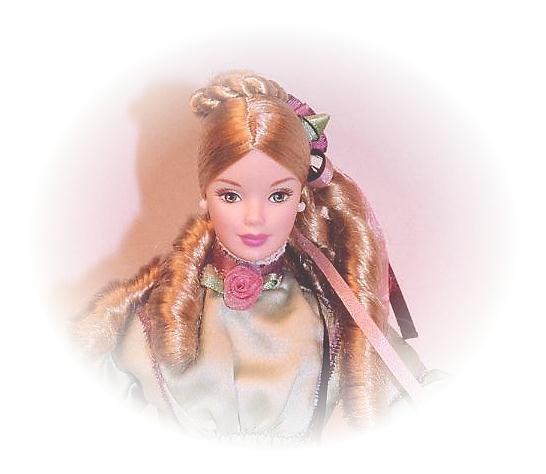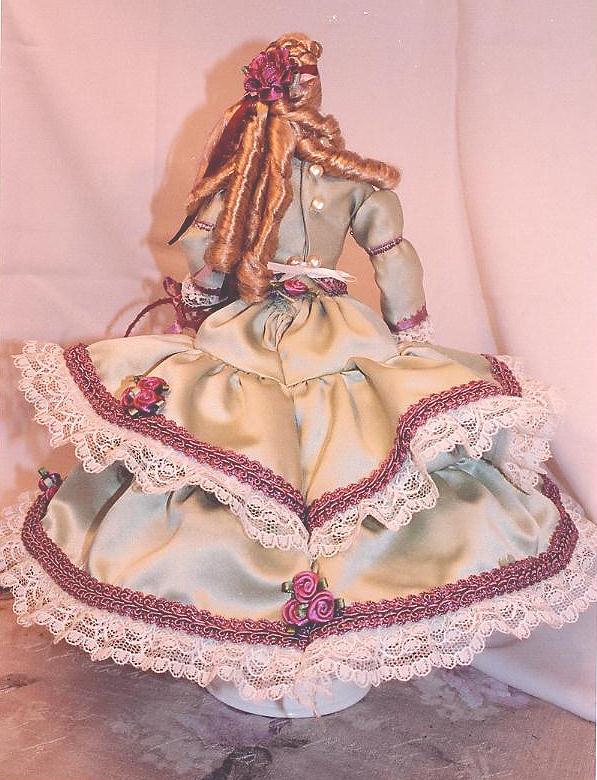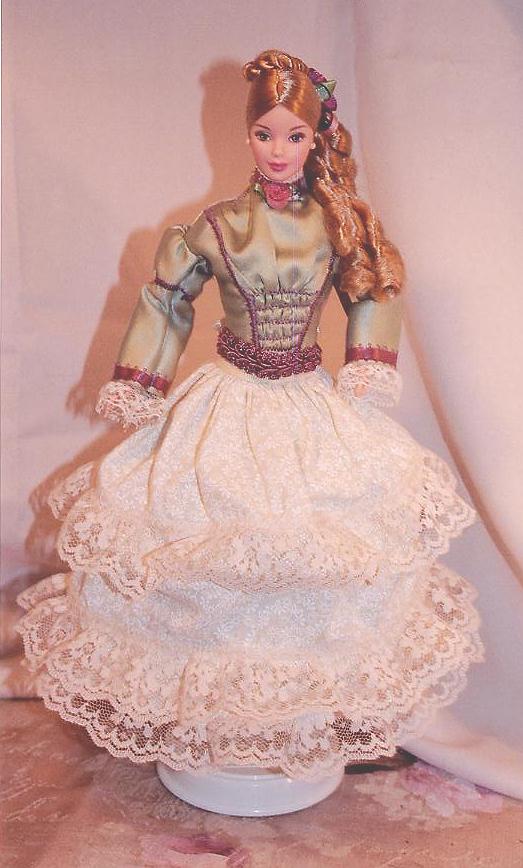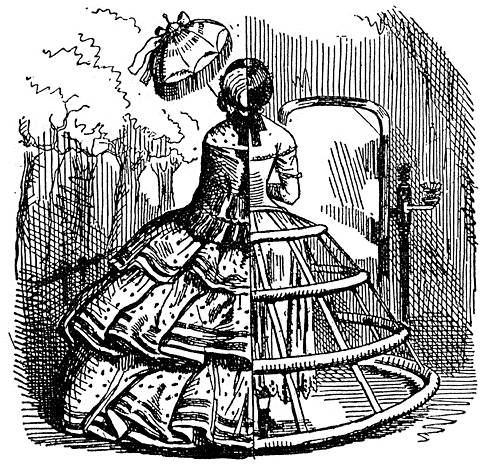 |
 |
 |
 |
 |
 |
 |
|
| Atlanta Belle |

|
This design continues my "Belle" series of Antebellum fashion (1850's-60's) with Camille, a lovely Belle from Atlanta--a
booming new town and fashion capital of the Deep South. The most obvious aspect of mid-century fashion was the hoop skirtor
rather a hoop crinoline under extremely full, bell-shaped skirt, flaring from a tightly corseted waist.
Miss Camille wears a stylish dress suitable for being out on the town during the day or for a morning or early afternoon
party, for as Mammy reminded Scarlett: a lady shouldn't show her bosom before 3:00! (evening ball-gowns of the time were more
likely to be sleeveless and have a low neckline--see my Richmond and Charleston Belles).
The complete outfit is in 4 separate and removable parts: basque (or bodice), skirt, petticoat/crinoline, and pantalettes.
The gown is made of rich, luminous, pale green satin trimmed in shades of mauve a cream, a very flattering color combination
inspired by the doll used in the design.
| Atlanta Belle |
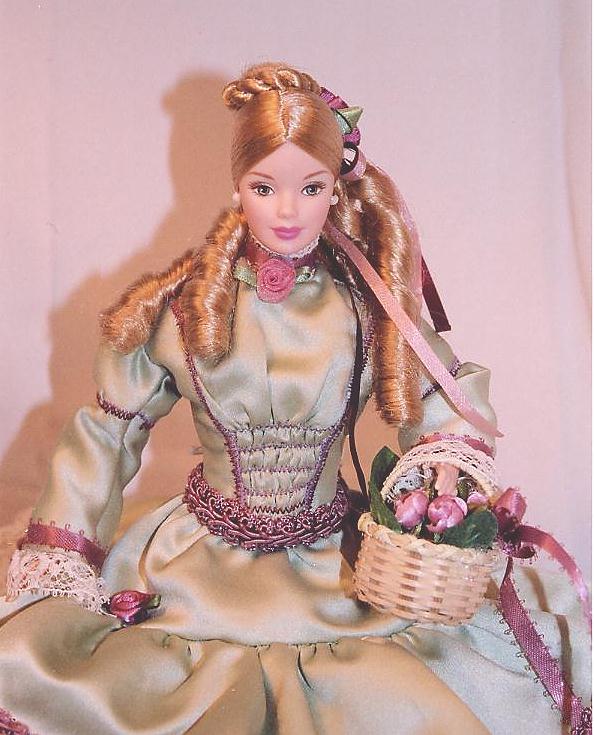
|
From the 1840's through the 1850's the "fan front" bodice was fashionable. It created the illusion of a small
waist with tucks at the shoulders, set wider and lower than the natural shoulder-line, which are then drawn into shirring
at the center front waist (hence resembling the pleats of a folding fan). The bodice would be mounted on a stiffened, form
fitting lining, and the whole thing would be boned and close in the back. Another feature of the times were "pagoda"
or "modified pagoda" sleeves, which were simply bell-shaped or flared sleeves, often gathered in at the upper arm,
but always full at the wrist; the full pagoda sleeve trailed down a long way and showed off a full undersleeve which was gathered
at the wrist, the modified version.
|
 |
|
 |
 |
 |
 |
 |
 |
 |
|
| Atlanta Belle |
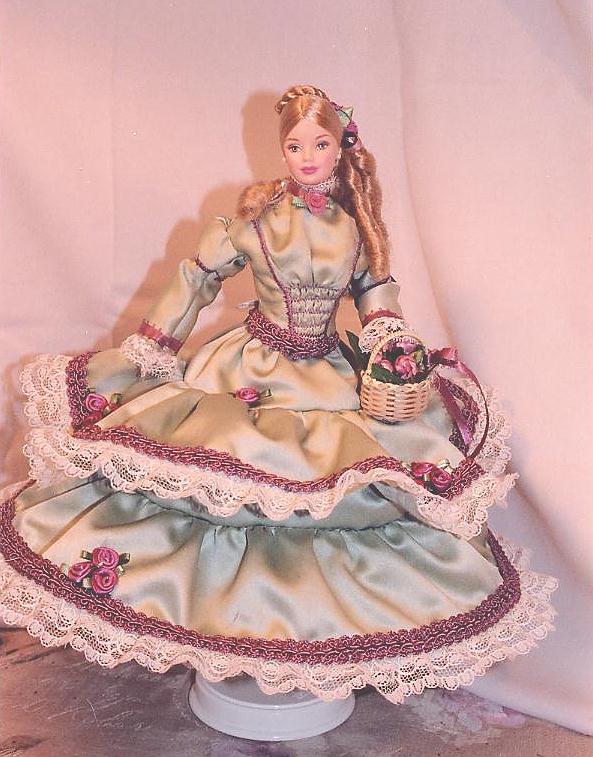
|
From the 1820's, the width of ladies's skirts was on the rise. Before the invention of the crinolinea stiff petticoat made
of horse-hair, women used layer upon layer of petticoats, up to 9 pounds worth and more, to support and hold their skirts
out into increasingly wide circumferences. The stiff crinoline stood out from the body by itself, reducing the number of
petticoats and the weight. The addition of wood or wire reinforcements evolved to thin metal hoops encased in a light fabric
which would even reduce the crinoline to a cage-like framework and took skirts out to their widest proportions ever in the
hoop-skirt craze of the 1850's and 60's.
Hoops were very difficult to manage and maneuver: simple things as sitting, going up steps, entering and exiting a carriage
or leaning over a display case to pick out new gloves had to be done very deliberately and with every attention, lest one's
hoops tip up and provide an unseemly show of petticoats and legs! Walking down the street in a stiff breeze, or attempting
to dance with one's partner (in a room full of other hoopskirts) could also prove embarrassing or even hazardous. Laura Ingalls
Wilder discussed these intricacies in her "Little House" series: how the hoops would start to creep up on a windy
day requiring the wearer to periodically stop and twirl in the other direction to bring them back down, and how girls were
taught to carefully sit, since the results of just plunking oneself down as we do today could result in one's hoop-skirt flying
over one's head! Social commentators at the time made fun of these "fripperies," but one suspects that both sexes
may have enjoyed a bit of a thrill in the inevitable showing or viewing of a lady's ankles and the edges of her frilly petticoats...
| Atlanta Belle |

|
This look has been reproduced here by stiffening the bodice with self-lining with fusible interfacing between the layers.
The fan shape has been achieved by carefully gathering tucks from the bust to the waist and accentuating the tucks and seams
of the bodice with extra decorative stitching in rose and mauve thread. The shoulder seam falls below the natural shoulder
line and the upper sleeve is slightly puffed and also accented with decorative stitching, while the rest of the sleeve falls
in a modified pagoda style to the wrists, accented in rose ribbon and cream lace. The high neckline is also accented with
ribbon and lace, as well as a chiffon rose, and the curving waistline of the basque with mauve braid.
|
|
 |
|
|
|
 |
 |
 |
 |
 |
 |
 |

| Atlanta Belle |
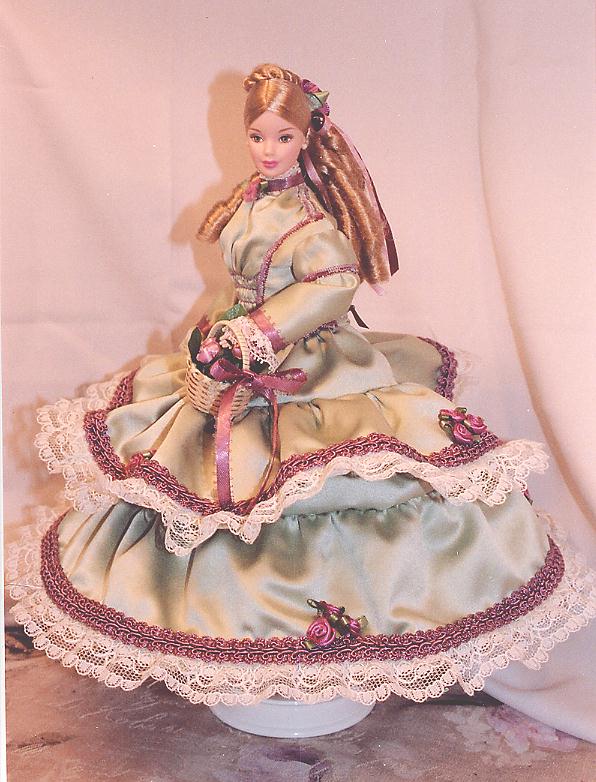
|
Camille's skirt comprises three tiers of fabric, with two, gathered flounces stiffened with interfacing to look like they
are twirling outward. The flounces are further trimmed with mauve braid and wide cream lace. Little nose-gays of mauve ribbon
roses adorn each tier. The bottom tier/flounce is wired to help it stand out and can be adjusted a little in or out, depending
on how much of her little boots and pantalettes should show.
| Atlanta Belle |
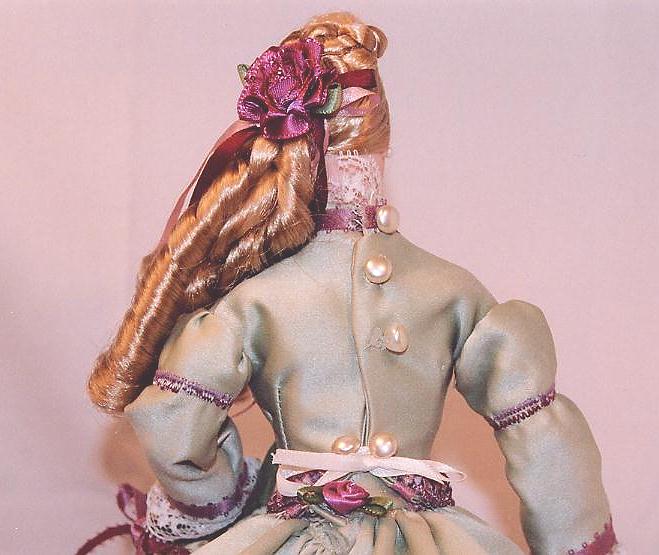
|
The basque closes in back with snaps hidden by creamy pearl buttons and a cinched closure at the waist of cream ribbon drawn
tightly between two pearl buttons.
| Atlanta Belle |
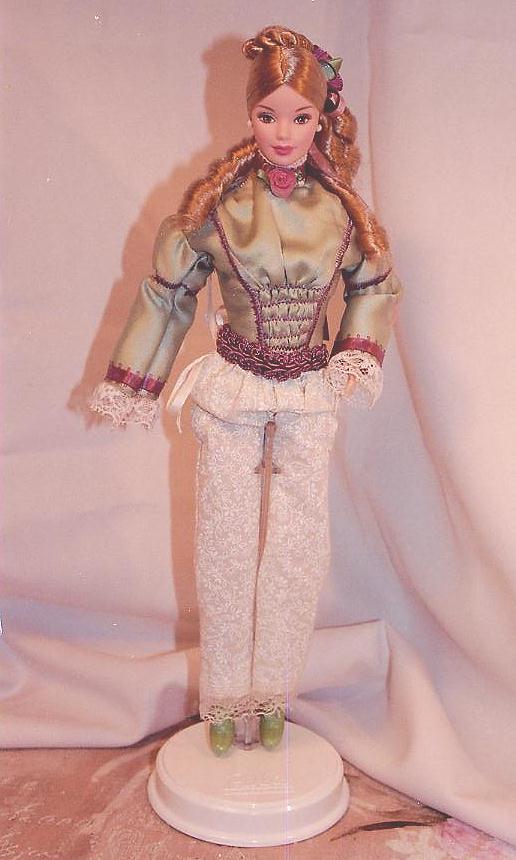
|
Undergarments of the time included pantalettes to cover the legs (very important when wearing a hoop-skirt) and the hoop crinoline;
a lady may have several hoop crinolines of varying sizes and width to use as occasion required, more modified for casual and
day use, and the widest for the extravagant ball gowns. Over this would go at least two petticoats, the prettiest and laciest
on top, since it might be glimpsed when maneuvering one's hoop skirts!
Camille has pretty panalettes of cream-colored cotton lawn, trimmed in cream lace at the ankles, under which peep her
pale green, heeled boots. I have combined the crinoline and petticoat into one--the petticoat is also the cream cotton lawn
with three wide lace flounces, underneath it is wired to provide the requisite bell-shape.
Click this link for the steps a mid-19th-century lady would take getting dressed with all these undergarments!
|
|
 |
 |
 |
|
The doll used for this design is the highly collectible "Victorian Barbie with Cedric Bear," but she is especially
unique in that, unlike the dolls produced for mass market which had light-brown hair, this doll is blonde (I believe she was
only produced for and sold at Barbie conventions). I have not touched this beautiful doll's face or hair--she was already
perfect for this design! She has creamy skin flushed slightly pink, with light green eyes (with a touch of pale green eye-shadow)
and full mauve lips. Her golden blonde hair is elaborately coifed with a braided coronet at the back of her head and long
"sausage" curls down the back, which were tied up with rose and mauve ribbons. I simply added a large, mauve ribbon
rose to make this hairstyle even more formal and polished.
Her accessories include pearl earrings and a basket of mauve roses--perhaps a hostess gift for the garden party!
|
|
 |
 |
 |

